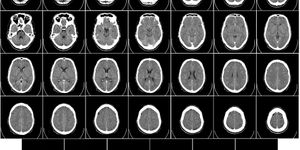Pain Medications with High Abuse Potential More Likely to Achieve Approval
Researchers found that pain medications with a high potential for abuse are more likely to be approved than medications with lower abuse potential. The corresponding study was published in Anesthesiology.
“The opioid crisis was a wake-up call for medicine as a whole,” said Dermot P. Maher, M.D., M.S., M.H.S., assistant professor, John Hopkins University School of Medicine, Baltimore, one of the study's authors.
“On the one hand, we had patients who were simply asking for their pain to be addressed. On the other hand, physicians had very little in their pharmaceutical toolbox that was either remarkably effective, non-addictive or lacked major side effects," he added.
For the study, researchers analyzed 469 pain pharmaceutical development programs conducted between 2000 and 2020 from the Citeline database involving 399 unique active pharmaceutical ingredients. Their analysis involved probabilities of success, duration, and survivorship from pain medication according to the phase, type of pain, and the potential for abuse.
The researchers noted that over the period, the overall probability of successful development of pain medications from development to approval was 10.4%. Whereas 13.3% of medications for nociceptive pain- such as sprains, burns, or bruises- were approved, the same was true for 7.1% of drugs for neuropathic pain- pain that arises from damage to nerves. They further noted that the most common period for attrition was between the Phase 3 clinical trial and approval.
From their analysis, they found that while 27.8% of medications with a high abuse potential were successfully developed and approved, the same was true for only 4.7% of mediations with low abuse potential. This remained even though the number of drugs with a high abuse potential under development decreased following the peak of the opioid epidemic in 2010.
“The higher probability of successful development could represent a more thorough biological understanding of pain signaling pathways targeted by medications with high abuse potential compared to the novel mechanisms offered by alternative medications with lower abuse potential,” said the authors of the research.
The researchers concluded that unique attributes of pain medications, including their abuse potential and intended pathology, can influence their probability of successful development, as well as the duration of their development.
They noted, however, that their study has several limitations. As their study was conducted retrospectively, they note that it cannot accurately predict the success of future development programs. They added that while they tried to include as many drug development programs as possible in their analysis, it is possible that they missed some.
Sources: Neuroscience News, Anesthesiology









